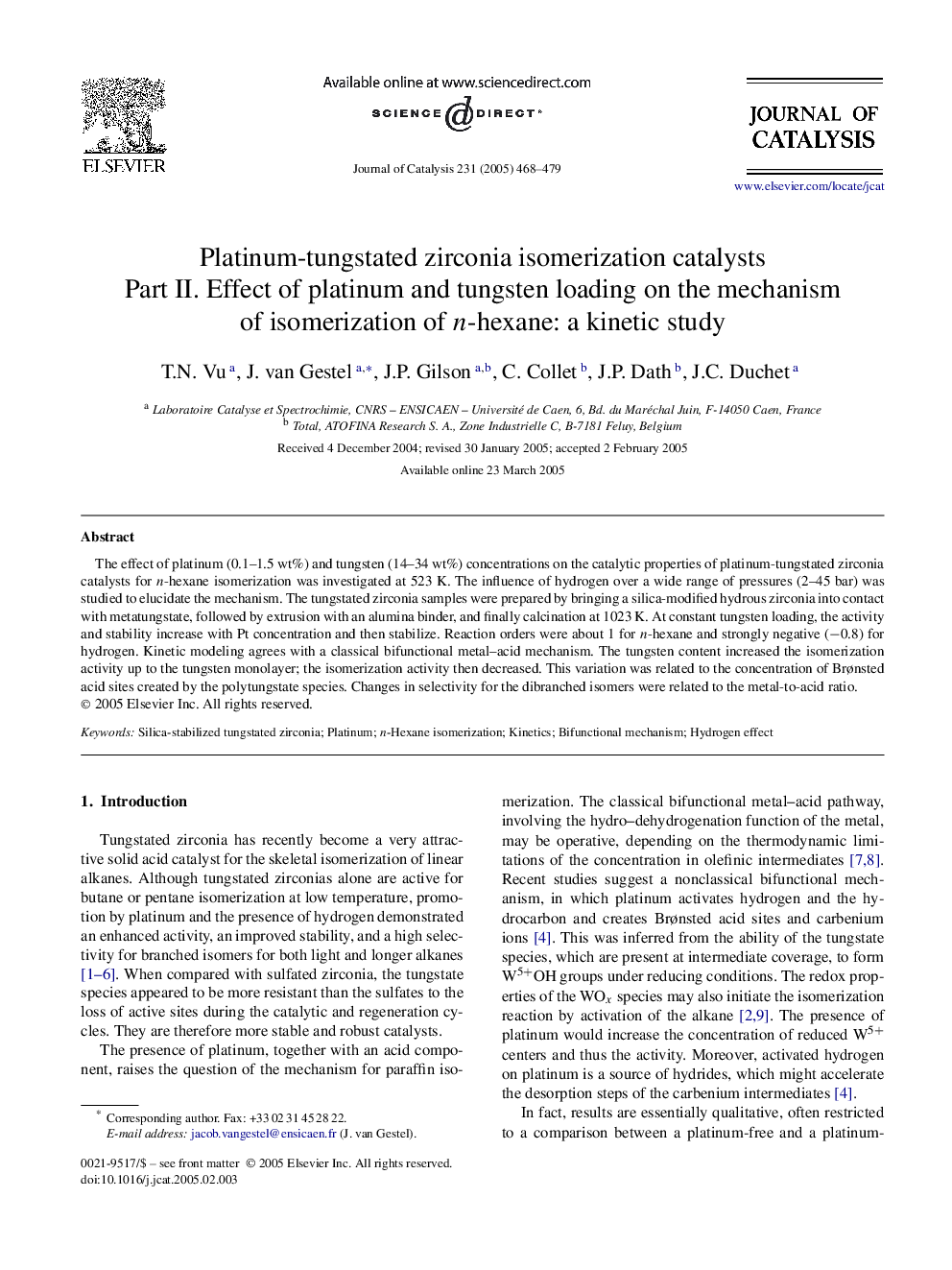| Article ID | Journal | Published Year | Pages | File Type |
|---|---|---|---|---|
| 10244620 | Journal of Catalysis | 2005 | 12 Pages |
Abstract
The effect of platinum (0.1-1.5 wt%) and tungsten (14-34 wt%) concentrations on the catalytic properties of platinum-tungstated zirconia catalysts for n-hexane isomerization was investigated at 523 K. The influence of hydrogen over a wide range of pressures (2-45 bar) was studied to elucidate the mechanism. The tungstated zirconia samples were prepared by bringing a silica-modified hydrous zirconia into contact with metatungstate, followed by extrusion with an alumina binder, and finally calcination at 1023 K. At constant tungsten loading, the activity and stability increase with Pt concentration and then stabilize. Reaction orders were about 1 for n-hexane and strongly negative (â0.8) for hydrogen. Kinetic modeling agrees with a classical bifunctional metal-acid mechanism. The tungsten content increased the isomerization activity up to the tungsten monolayer; the isomerization activity then decreased. This variation was related to the concentration of Brønsted acid sites created by the polytungstate species. Changes in selectivity for the dibranched isomers were related to the metal-to-acid ratio.
Related Topics
Physical Sciences and Engineering
Chemical Engineering
Catalysis
Authors
T.N. Vu, J. van Gestel, J.P. Gilson, C. Collet, J.P. Dath, J.C. Duchet,
